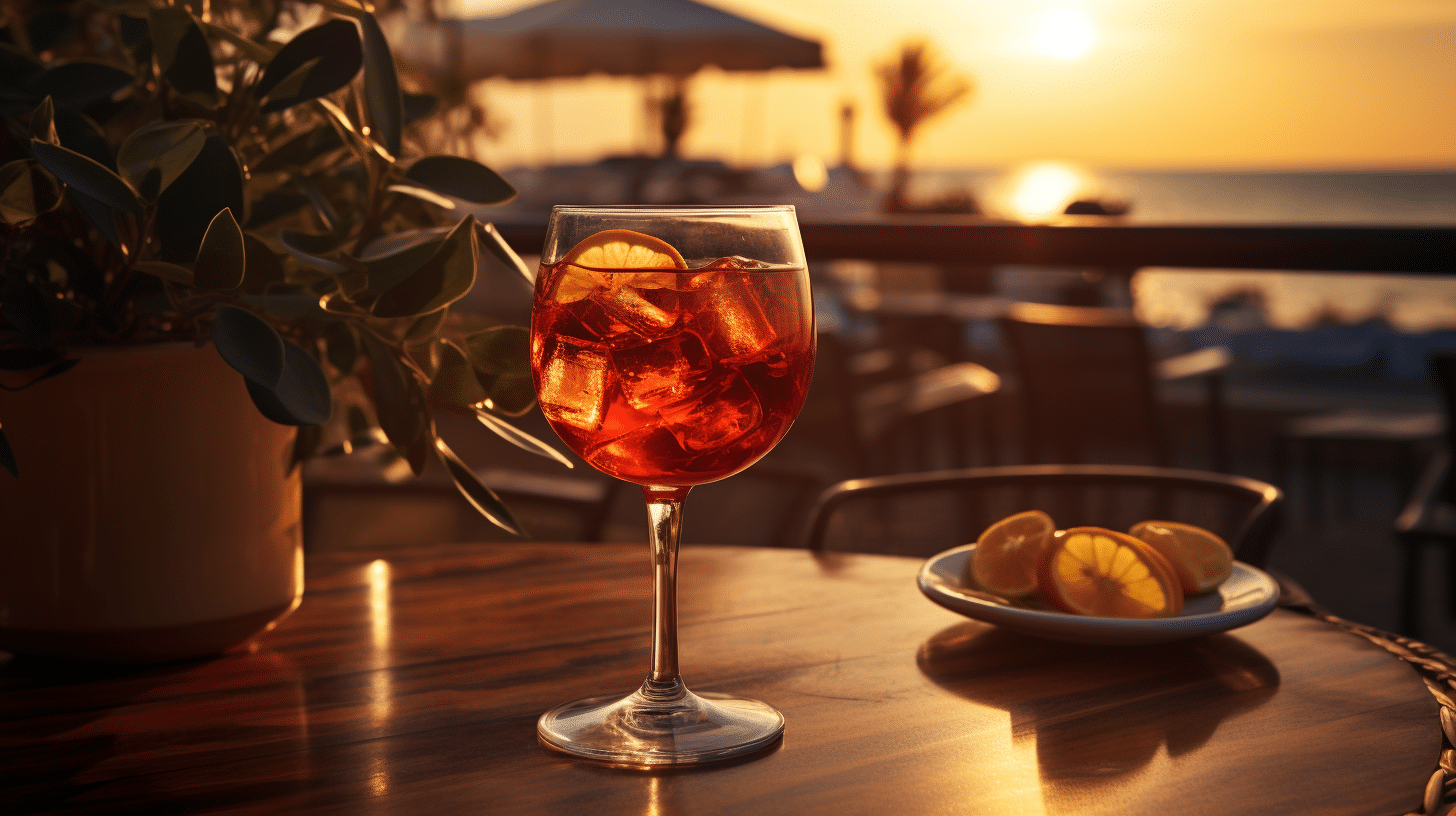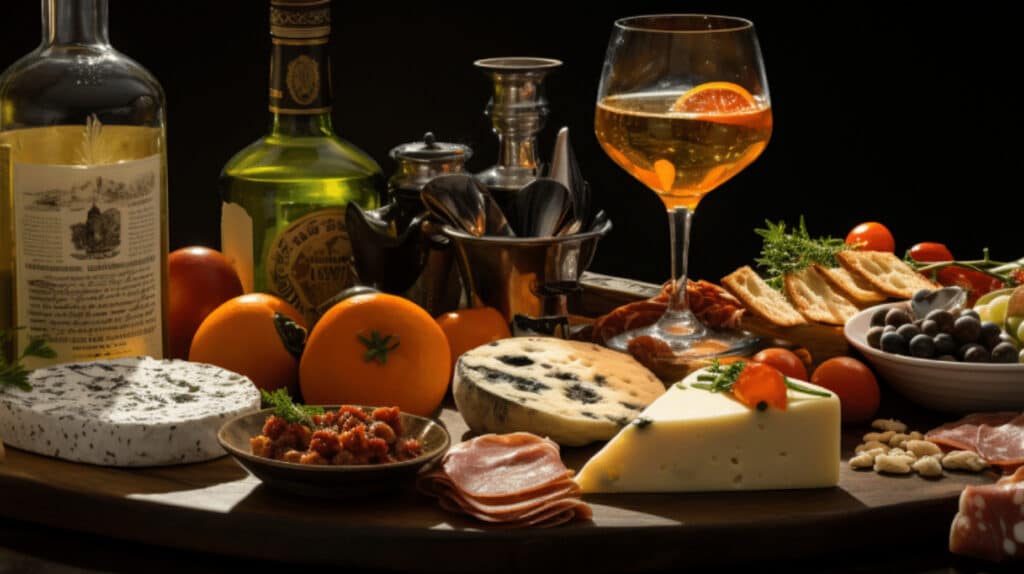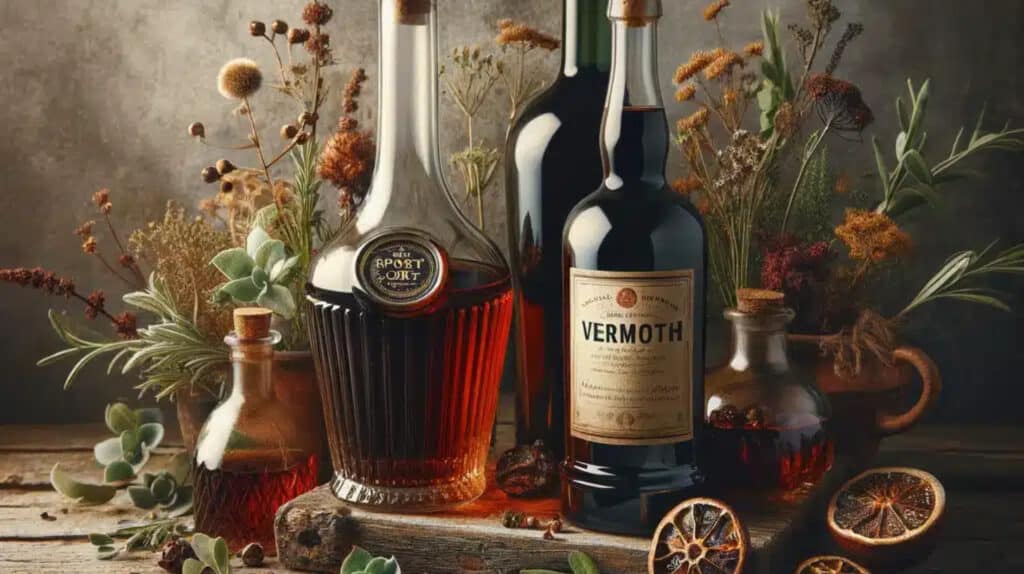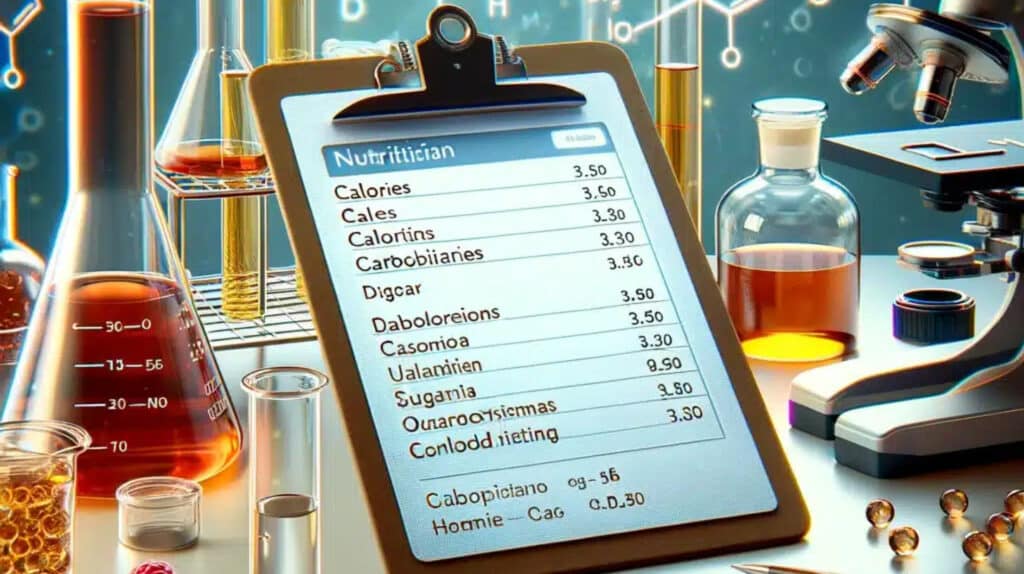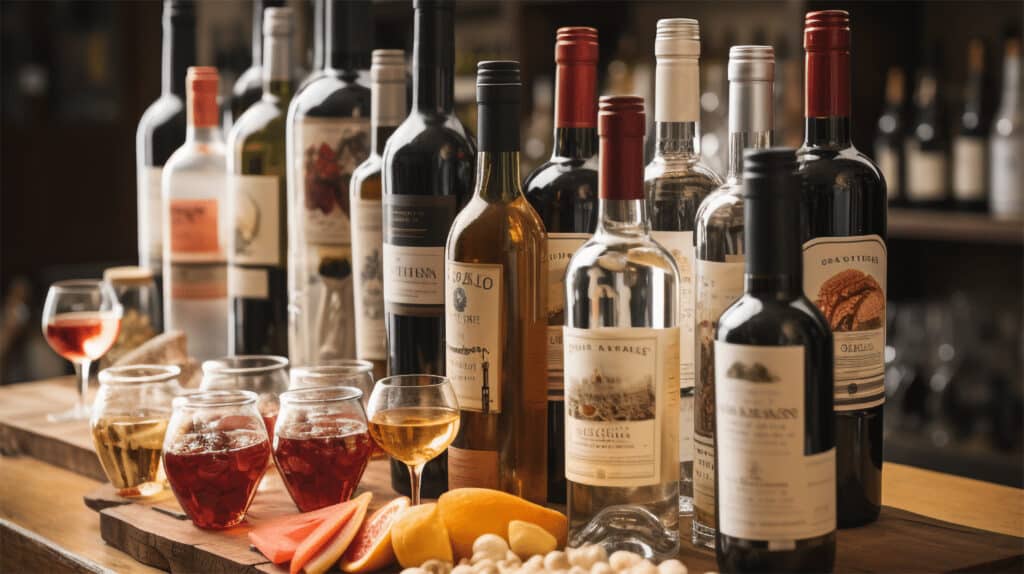When it comes to alcoholic beverages, there are many options to choose from, including vermouth and wine. Both are popular choices for people who enjoy a drink, but how do they differ in terms of alcohol content? In this article, we will compare the alcohol content of vermouth and wine and determine which one has a higher percentage of alcohol.
Vermouth is a type of fortified wine that is flavored with various botanicals and herbs. It originated in Italy in the 18th century and has since become a popular aperitif and cocktail ingredient. On the other hand, wine is a fermented beverage made from grapes. It has a long history dating back to the ancient civilizations and is still enjoyed by many around the world today.
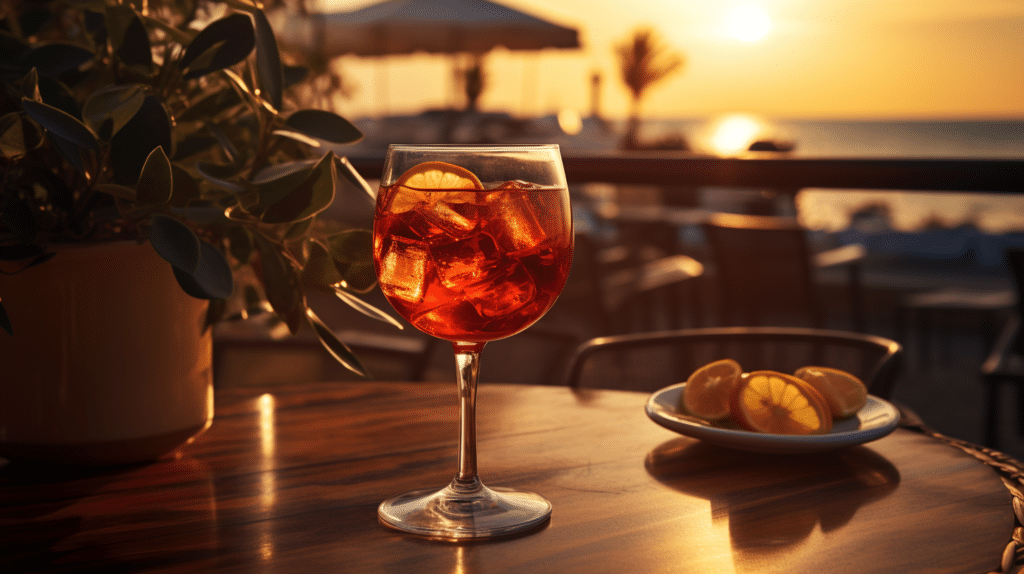
At first glance, vermouth and wine may seem similar, but there are some key differences between the two. Let’s take a closer look at the similarities and differences.
Similarities between Vermouth and Wine:
- Both are alcoholic beverages
- Both are made from fermented grapes
- Both can be red or white
Differences between Vermouth and Wine:
- Distillation process: Vermouth goes through a distillation process, whereas wine does not.
- Botanicals and herbs added to vermouth: Vermouth is infused with various herbs, spices, and botanicals to give it a unique flavor, while wine relies solely on the grapes for its flavor.
- Alcohol content: The most significant difference between vermouth and wine is their alcohol content.
How Is the Alcohol Content of Vermouth and Wine Measured?
Typical ABV for Vermouth:
Before we dive into the differences in alcohol content, it’s essential to understand how the alcohol content of these beverages is measured.What Is ABV?
ABV stands for Alcohol by Volume, and it is a standard measurement used to determine the percentage of alcohol in a drink. It is calculated by dividing the amount of alcohol in a beverage by the total volume of the liquid and multiplying it by 100.How Is ABV Calculated?
For example, if a drink contains 40 ml of alcohol and has a total volume of 200 ml, the ABV would be 20% (40/200 = 0.2 x 100 = 20%). The higher the ABV, the stronger the drink will be.What Is the Alcohol Content of Vermouth vs Wine?
The ABV of vermouth can range from 16% to 22%, depending on the brand and type. Sweet vermouth usually has a lower ABV than dry vermouth, and red vermouth tends to have a higher ABV than white vermouth.
Typical ABV for Wine:
The ABV of wine can vary greatly, but it usually falls between 11% to 14%. Dessert wines can have a higher ABV of up to 20%, while some light wines may have an ABV as low as 5%.Which Has a Higher Alcohol Content: Vermouth or Wine?
Overall, vermouth has a higher alcohol content than wine. While the average ABV for vermouth is around 18%, the average ABV for wine is around 13%. However, it’s important to note that there are exceptions, and some wines may have a higher ABV than certain types of vermouth.How Much Vermouth or Wine Should Be Consumed?
Regardless of the alcohol content, it’s essential to consume all alcoholic beverages in moderation. The recommended daily alcohol consumption for healthy adults is no more than one drink for women and two drinks for men.Conclusion: Which Is Better for You – Vermouth or Wine?
In terms of alcohol content, vermouth is the stronger beverage. However, both
Key Takeaways:
Vermouth and wine are both alcoholic beverages made from fermented grapes, but vermouth is infused with botanicals and herbs. The alcohol content of vermouth is typically lower than that of wine, with an average ABV of 16-18% compared to wine’s average of 11-14%. When consuming vermouth or wine, it is important to moderate your intake and follow recommended guidelines to ensure responsible and safe consumption. https://www.youtube.com/embed/YUwXatsil94
What Is Vermouth?
Vermouth is a fortified wine flavored with various botanicals, such as herbs, spices, and roots. It originated in Europe and is typically enjoyed as an aperitif. Vermouth can be dry or sweet, depending on the type of wine used and the amount of sugar added. It is commonly used as a mixer in cocktails like the classic Martini and Negroni. The distinct flavor profile of vermouth makes it a versatile ingredient in both classic and contemporary recipes.
So, what is vermouth? It is a flavorful and aromatic fortified wine that adds depth and complexity to cocktails and culinary creations.
What Is Wine?
Wine is an alcoholic beverage made from fermented grapes or other fruits. It has been enjoyed for centuries and is known for its rich flavors and aromas. Wine comes in different varieties, including red, white, and rosé, each with its unique characteristics. The production process involves crushing and fermenting the grapes, followed by aging in barrels or bottles. Wine is often associated with social gatherings, celebrations, and fine dining. Whether you prefer a bold Cabernet Sauvignon or a crisp Chardonnay, wine offers a wide range of options to suit different tastes and occasions. Cheers!
Similarities between Vermouth and Wine
Vermouth and wine are two popular alcoholic beverages that share some similarities despite their distinct characteristics. First and foremost, both are considered alcoholic beverages and are enjoyed by many around the world. Additionally, they are both made from fermented grapes, although the processes and ingredients may differ. Lastly, both vermouth and wine can be made in either red or white varieties, offering a range of options for consumers. In this section, we will delve deeper into these shared qualities and how they contribute to the overall experience of drinking vermouth and wine.
Both are Alcoholic Beverages
Both vermouth and wine are types of alcoholic beverages, but they have distinct differences in their production processes and flavor profiles. While wine is made solely from fermented grapes, vermouth undergoes a distillation process and includes the addition of botanicals and herbs.
In terms of alcohol content, vermouth typically has a lower ABV (Alcohol By Volume) compared to wine, with a range of 16% to 18% for vermouth and 12% to 15% for wine. It is important to consume both vermouth and wine in moderation, as with any alcoholic beverage.
Ultimately, the choice between vermouth and wine depends on personal preferences and drinking habits.
Both are Made from Fermented Grapes
Both vermouth and wine are made from the fermentation of grapes, making them similar in their base ingredient. However, the process of making vermouth involves additional steps, such as the addition of botanicals and herbs, which give it a distinct flavor. Wine, on the other hand, is typically made solely from fermented grapes and does not include these additional ingredients.
Despite their shared origin, the final products have different flavor profiles and alcohol contents. While vermouth is fortified with additional alcohol and typically has a higher alcohol content, wine generally has a lower alcohol content. Ultimately, the choice between vermouth and wine depends on personal preference and the occasion.
Both Can Be Red or White
Both vermouth and wine offer a wide range of flavors and options for different palates, with both red and white varieties available. When deciding between red or white vermouth or wine, take the following steps into consideration:
- Determine your flavor preferences.
- Consider the occasion or meal pairing.
- Take into account personal taste and preference.
- Experiment with different varieties to find your favorite.
Pro-tip: To fully enjoy the flavors, it’s recommended to let vermouth or wine breathe for a few minutes before serving. This allows the flavors to fully develop and enhances the overall experience.

Differences between Vermouth and Wine
While vermouth and wine may both fall under the category of alcoholic beverages, they have distinct characteristics that set them apart from each other. In this section, we will delve into the differences between vermouth and wine, starting with their production methods. Then, we will explore the unique botanicals and herbs that are added to vermouth, giving it a distinctive flavor profile. Finally, we will compare the alcohol content of these two libations and how it contributes to their overall taste and experience.
Distillation Process
The distillation process is a crucial element that distinguishes vermouth from wine. Here are the steps involved in the distillation process of vermouth:
- Base wine selection: Choose a high-quality wine as the base for vermouth.
- Fortification: Add neutral spirits like brandy or grape spirits to increase the alcohol content.
- Infusion: Blend the base wine with a mixture of botanicals and herbs, such as wormwood, cinnamon, and cloves.
- Maceration: Allow the blend to steep for a specific period, allowing the flavors from the botanicals to infuse into the liquid.
- Clarification: Filter the infused liquid to remove any sediment or impurities.
- Sweetening: Add sweeteners like sugar or caramel to balance the flavors.
- Aging: Age the vermouth in barrels or tanks to further develop its flavors.
- Bottling: Finally, the vermouth is bottled and ready to be enjoyed.
Botanicals and Herbs Added to Vermouth
Botanicals and herbs are essential elements that are incorporated into vermouth to give it its distinctive flavor and aroma. The specific combination of these botanicals varies depending on the brand and recipe, but typically includes ingredients such as wormwood, chamomile, citrus peels, and various spices. These botanicals are infused into the base wine and then fortified with additional alcohol. This infusion process allows for the extraction and integration of the botanicals’ flavors and aromas into the vermouth. It is this unique blend of botanicals and herbs that creates the distinct taste profile that sets vermouth apart from regular wine.
Alcohol Content
The alcohol content of vermouth and wine can vary depending on the brand and style. Here is a comparison of the typical alcohol content for both:
| Vermouth | Wine |
| Typical ABV | Typical ABV |
| 16-18% | 12-15% |
Vermouth generally has a higher alcohol content than wine. It is important to consume both beverages in moderation and be aware of their alcohol content. The alcohol by volume (ABV) is used to measure the alcohol content in both vermouth and wine. ABV is calculated by determining the amount of pure alcohol as a percentage of the total liquid volume. It is always advisable to drink responsibly and be aware of your alcohol intake.
Flavor Profiles
Flavor profiles play a significant role in distinguishing between vermouth and wine. While wine’s flavor is primarily derived from fermented grapes, vermouth offers additional complexity thanks to the inclusion of botanicals and herbs. Depending on the specific blend of ingredients, vermouth can have a range of flavors, from floral and herbal to bitter and spicy. In contrast, the flavor profile of wine varies based on the type of grape, region, and winemaking techniques utilized. Ultimately, the decision between vermouth and wine is a matter of personal preference and the desired flavor experience. Experiment with different options to discover the perfect match for your taste buds.
How Is the Alcohol Content of Vermouth and Wine Measured?
To accurately measure the alcohol content of vermouth and wine, the following steps are typically followed:
- Collect a sample of the vermouth or wine to be tested.
- Utilize a hydrometer or alcohol meter to measure the specific gravity of the sample.
- Make note of the initial specific gravity reading.
- Distill a portion of the sample using a distillation apparatus.
- Measure the alcohol content of the distillate using an alcoholometer.
- Calculate the alcohol content of the original sample based on the difference in specific gravity readings and the alcohol content of the distillate.
The practice of measuring alcohol content dates back centuries. In the 18th century, Swedish chemist Anders Celsius invented the hydrometer, revolutionizing the measurement of alcohol content in beverages. This breakthrough led to more precise methods and a deeper understanding of the alcohol content in vermouth and wine.
What Is ABV?
ABV stands for Alcohol by Volume, and it is a crucial measurement used to determine the alcohol content in alcoholic beverages. It represents the percentage of alcohol in a given volume of liquid. ABV is an important factor to consider when comparing vermouth and wine, as it directly affects their potency and potential effects. For example, a higher ABV in vermouth or wine indicates a stronger alcoholic content. It is crucial to be mindful of ABV when consuming these beverages, as excessive alcohol consumption can have negative health consequences.
Now, let me share a true story related to ABV.
In 2019, a woman attended a wine tasting event and unknowingly consumed a wine with a higher ABV than she was used to. As a result, she became intoxicated much faster than expected and had difficulty maintaining her composure. This experience taught her the importance of understanding ABV and being aware of her alcohol limits when indulging in alcoholic beverages.
How Is ABV Calculated?
- ABV, or Alcohol by Volume, is a measure of the alcohol content in a beverage.
- To calculate ABV, you need to know the initial and final specific gravity of the liquid.
- Specific gravity is the density of a liquid compared to the density of water.
- Using a hydrometer, measure the specific gravity of the liquid before fermentation (initial) and after fermentation (final).
- Subtract the final specific gravity from the initial specific gravity.
- Multiply the difference by a conversion factor, usually 131.25.
- The final value is the ABV percentage of the beverage.
Pro-tip: For an accurate ABV calculation, it is crucial to precisely measure the specific gravity. Use a calibrated hydrometer and carefully follow the instructions.
What Is the Alcohol Content of Vermouth vs Wine?
In the world of alcoholic beverages, there are countless options to choose from. Two popular choices are vermouth and wine, both of which have distinct characteristics and flavors. However, one major difference between these two drinks is their alcohol content. Let’s take a closer look at the average alcohol by volume (ABV) of vermouth and wine. We’ll discuss the typical ABV for vermouth and compare it to the typical ABV for wine, shedding light on the differences in strength between these two libations.
It’s important to note that these ranges are approximate and can vary slightly among different brands. When consuming vermouth, it’s essential to be mindful of the Typical ABV for Vermouth and drink responsibly.
Typical ABV for Vermouth
The typical ABV (alcohol by volume) for vermouth can vary depending on the brand and style. Here is a table showcasing the approximate ABV range for different types of vermouth:
| Vermouth Type | Typical ABV Range |
| Dry Vermouth | 15% – 18% |
| Sweet (Red) Vermouth | 16% – 18% |
| Extra Dry Vermouth | 18% – 21% |
| Blanc Vermouth | 15% – 18% |
Typical ABV for Wine
The average alcohol by volume (ABV) for wine can differ depending on the type of wine. Below is a table showcasing the typical ABV for various types of wine:
| Wine Type | Average ABV |
| White Wine | 11-14% |
| Red Wine | 12-15% |
| Rose Wine | 11-13% |
| Sparkling Wine | 11-12% |
| Dessert Wine | 14-20% |
It’s important to keep in mind that these are average values and the specific ABV may vary among different wine brands and regions. Always refer to the label for the precise alcohol content before consuming.
Which Has a Higher Alcohol Content: Vermouth or Wine?
Vermouth typically has a higher alcohol content than wine. While wine usually contains 10-15% alcohol by volume (ABV), vermouth can range from 16-22% ABV. This higher alcohol content in vermouth is due to the addition of a fortified spirit, typically brandy. The fortified spirit not only increases the alcohol content but also adds flavor and sweetness to vermouth. So, if you’re looking for a stronger drink, vermouth would be the preferred choice.
Fun Fact: The word “vermouth” comes from the German word “wermut,” which means wormwood, a crucial ingredient in the production of vermouth.
How Much Vermouth or Wine Should Be Consumed?
To determine the appropriate amount of vermouth or wine to consume, follow these steps:
- Know the recommended guidelines: Check the alcohol consumption guidelines provided by health organizations to understand the recommended limits for both vermouth and wine.
- Consider your tolerance: Understand your own tolerance level for alcohol and how it affects you personally. This can vary from person to person.
- Drink in moderation: Regardless of the type of alcohol, it’s important to consume in moderation. Stick to recommended serving sizes and avoid excessive drinking.
- Listen to your body: Pay attention to how your body reacts to alcohol. If you start to feel intoxicated or experience negative effects, it’s a sign to stop or slow down.
- Seek professional advice: If you have specific health concerns or questions about alcohol consumption, consult a healthcare professional for personalized guidance.
Frequently Asked Questions
What is the difference between vermouth and white wine?
Vermouth is a fortified wine that is flavored with various botanicals, while white wine is simply fermented grape juice. Vermouth has a higher alcohol content and is more shelf-stable, making it a popular substitute for white wine in cooking.
When was vermouth first invented?
Vermouth has a long history, with origins dating back to the 16th century. The Romans were the first to make wormwood-infused wines, which eventually evolved into the vermouth we know today.
How is vermouth made?
Vermouth is made by infusing a base wine with a variety of botanicals, including cinchona bark, wormwood, and orange peel. The resulting mixture is then fortified with additional alcohol, creating a more stable and flavorful beverage.
Can vermouth be stored for a long time?
Yes, vermouth can be stored for several months in the refrigerator, especially if the bottle is opened. However, its flavor and aroma will slowly deteriorate over time, so it is best consumed within 3-9 months.
In what ways can vermouth be used other than as a drink?
Vermouth has a wide range of uses, including as an ingredient in cooking. It adds depth and complexity to dishes, and can also be used in various cocktails such as Negronis and Manhattans.
Is vermouth only produced in specific countries?
No, vermouth is produced in various countries, including Italy, France, and Spain. Each country has its own unique methods and flavor profiles, with France known for its sweetness and spice, Italy for its use of high-altitude alpine flowers, and Spain for its local herbs and spices.

